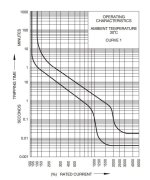Dealing with a 100V charger hooked up to our 48V pack... what to do?
* We could detect this and refuse to close the contactor.
* We could accept this and charge to HVC then blow open.
I think it is highly likely that in the future people will accidentally hook up power supplies which are over the pack HVC.
This is the single most dangerous risk of any of this... the most guaranteed way to fail and cause epic time delay fire.
We never want to encourage this at any time in any place under any circumstances...
But we could...
Plenty of CC/CV sources out there... many of them not a perfect match... sure would be damn nice to be able to set the power supply to 50V... 90V... 130V... and let the current limiter just rail while it charges the pack... then trust that it will stop when it is full. In this case - you can have just one charger around that is equal to or greater than your highest charge voltage... then belligerently use it for all your packs.
If we encouraged this... THERE WOULD BE A FIRE EVENTUALLY.
We would be held to the HIGHEST standards of reliability such that our contactor MUST blow open reliably.
And... on that subject... how about the over charge and over discharge current issue?
Three values we must respect - only some of which will display in the temperature domain.
* Short circuit instantaneous current that will result in spark fires.
* Over discharge current such that the contactor will overheat or cells will get sagged too hard.
* Over charge current such that the cells will be stressed.
Is it our job to monitor these things and if so on what time scale?
* Short circuit... probably yea... its just dangerous... tho we can always go back to our original plan to just RUN A FUSE




Or a BREAKER...
* Discharge... we can monitor the temperature of the cells and possibly the contactor... both are an issue... but how full featured do we need to be?
A slow blow fuse at our constant output current would allow for burst current for short periods... meh...
A fast blow fuse out our absolute peak current would not protect the constant output... or would it? Well... if we actually discharge our 10AH pack at 200A for more than a few seconds its cells will sag, its temp will rise quickly, and we can see that and stop it... so we can ignore that.
* Charge current... this is a tough one. Its the responsibility of the user. I would propose that on the outside of the contactor we have 2 lines.
A heavy gauge line fused to our Peak allowable current with a fast acting high voltage fuse
A light gauge clearly marked CHARGE line fused at our max allowable charge current.
Fuses solve these problems
Breakers solve these problems
Separating out Charge and Discharge solve these problems (so much to learn by looking at the Chinese BMS designs... everything is for a reasons... and usually an important reason)
IF we think breakers... we can run them in series with the contactor... more reliability.
They are only $17... and truth is... they are pretty much perfect in the thermal domain as they allow for a large degree of over-current... like double... before they blow.... and you can always reset them in the field... tho not IP rated...
Fuses... sigh fuses... Still dont have a good source for HVDC fuses. Anyone?
Feeling better about this as it converges back on simple.
KISS
KIFSS
KEEP IT F&CKING SIMPLE STUPID
Things that are not kept simple... and are not funded and staffed well... dont get done.
-methods
 Starting to look at them, and found the carling remote module add on to the C series. I have used C series breakers before on some designs and never knew there was a remote module.
Starting to look at them, and found the carling remote module add on to the C series. I have used C series breakers before on some designs and never knew there was a remote module.

